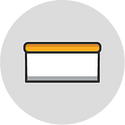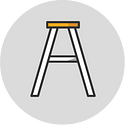
Installing Your Wallpaper
Allow yourself plenty of time to do the installation, as this is a job that shouldn’t be rushed. It’s important for your wall to be well-lit to ensure flawless results, so if you’re counting on daylight for your installation, make sure to take that into account. With the help of a friend (or two), you’ll be standing back and admiring your new custom wallpaper in no time!
Installing Your Wallpaper
Allow yourself plenty of time to do the installation, as this is a job that shouldn’t be rushed. It’s important for your wall to be well-lit to ensure flawless results, so if you’re counting on daylight for your installation, make sure to take that into account. With the help of a friend (or two), you’ll be standing back and admiring your new custom wallpaper in no time!
What You’ll Need

Measuring Tape

Pencil & Level

Exacto Knife

Squeegee (supplied)

Ladder
Hanging Your Wallpaper Panels







Hanging Your Wallpaper Panels
Hanging Your Wallpaper Panels







IMPORTANT:
Before you trim around any electrical outlets or switches, ensure the power to them has been turned off via your breaker box. Better safe than sorry!
Removing Your Wallpaper



Removing Your Wallpaper





